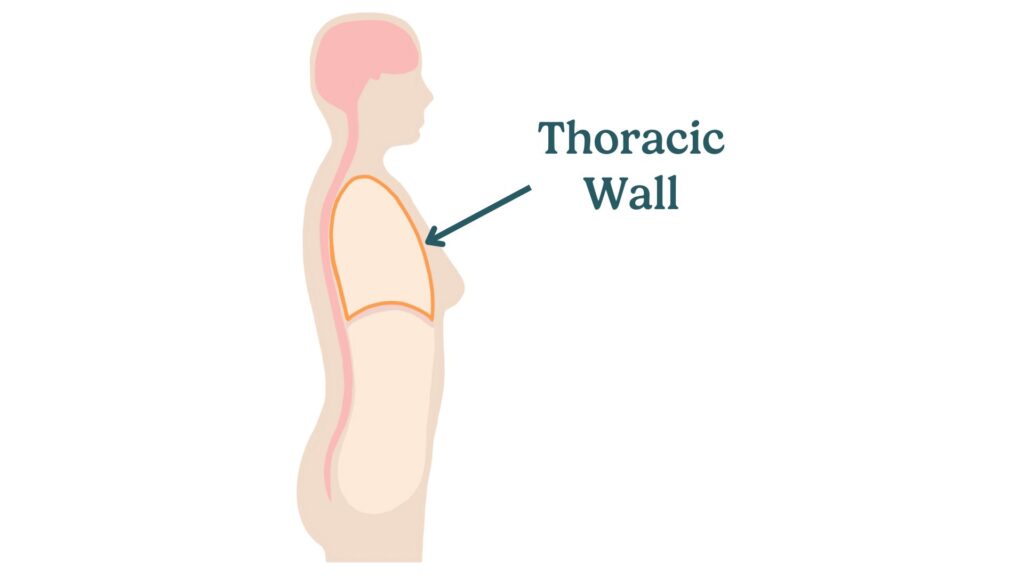thoracic wall

Thoracic wall
The thoracic wall is the structure that surrounds and protects the chest cavity, including the heart and lungs. It consists of bones (ribs, sternum, and spine), muscles, and tissues. The thoracic wall provides support and attachment points for the breasts and plays a role in the mechanics of breathing.
What to watch out for
Understanding the thoracic wall's role in breastfeeding and overall health can help you manage any related issues:
- Breastfeeding positions: Proper positioning during breastfeeding is crucial to avoid strain on your thoracic wall and back. Use supportive pillows to help maintain a comfortable position for both you and your baby. Experiment with different breastfeeding positions to find what works best for you. Learn more about common breastfeeding positions.
- Posture: Maintaining good posture while breastfeeding can prevent back and chest pain. Ensure you are sitting comfortably with adequate back support. Avoid hunching over your baby, as this can strain your thoracic muscles.
- Chest pain: If you experience chest pain while breastfeeding, it could be due to poor posture, muscle strain, or other underlying conditions. Ensure you are well-supported and consult a healthcare provider if the pain persists.
- Breathing issues: The thoracic wall plays a key role in breathing. If you have conditions that affect your breathing, such as asthma or respiratory infections, manage these conditions carefully to avoid additional strain during breastfeeding.
If you experience persistent pain, breathing difficulties, or other concerns related to the thoracic wall, seek advice from a healthcare professional.
Physical limitations or health circumstances
Certain conditions and circumstances can affect the thoracic wall and impact breastfeeding:
- Musculoskeletal issues: Conditions like scoliosis or previous injuries to the chest or back can affect the thoracic wall's structure and function, potentially making breastfeeding more challenging. Work with a healthcare provider or physical therapist to find comfortable breastfeeding positions.
- Respiratory conditions: Asthma, chronic bronchitis, or other respiratory conditions can affect the muscles and bones of the thoracic wall, making breathing more difficult. Proper management of these conditions is important during breastfeeding.
- Surgical history: Previous chest surgeries, such as heart or lung surgeries, can impact the thoracic wall's integrity and function. Ensure your healthcare provider is aware of your surgical history to provide appropriate breastfeeding support.
Other terms
- Ribs: The bones that form the protective cage around the chest cavity, providing support for the thoracic wall and attachment points for the breasts.
- Sternum: The flat bone in the center of the chest to which the ribs are attached, helping to protect the heart and lungs.
- Intercostal muscles: The muscles located between the ribs that assist with breathing and support the thoracic wall.
- Posture: The position in which you hold your body while sitting or standing, important for preventing strain on the thoracic wall during breastfeeding.


